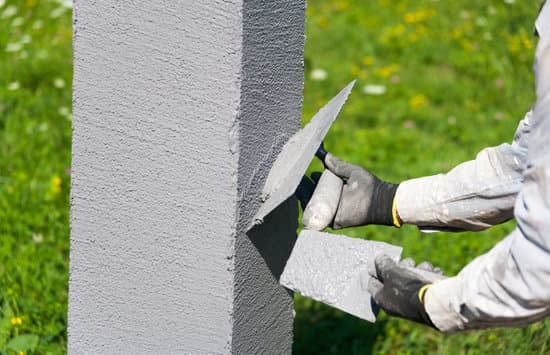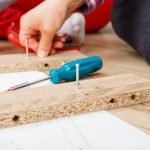Are you considering making improvements to your home but wondering how much value they will add? What percentage do new improvements add to your home?
This article will explore the impact of home improvements on property value, the key factors influencing the percentage added by new improvements, and tips for maximizing the return on investment. Whether you’re looking to increase your home’s value for resale or simply want to enhance its appeal for personal enjoyment, understanding the value of home improvements is essential.
When it comes to making changes to your home, it’s important to consider not only the aesthetic and practical benefits but also the financial impact. From renovating kitchens and bathrooms to adding energy-efficient features, certain improvements can significantly increase the overall value of your property. But just how much value can you expect these changes to add? Understanding this can help you make informed decisions about which improvements are worth pursuing.
In this article, we will delve into examples of high-value home improvements and provide insights into budget-friendly options that can still yield a significant return. Additionally, we’ll discuss the importance of quality workmanship and materials in increasing home value, as well as whether hiring professionals or taking on projects yourself yields the best return. By exploring these topics, you’ll gain valuable knowledge that will help you make informed decisions about improving your home.
Understanding the Impact of Home Improvements on Property Value
When it comes to increasing the value of your home, making improvements can be a smart investment. The percentage added to your property value by new improvements can vary depending on several factors. Understanding these factors is important for homeowners who are looking to maximize their return on investment.
Key Factors that Influence the Percentage Added by New Improvements:
- Location: The impact of home improvements on property value can be greatly influenced by the location of the home. In desirable neighborhoods with high property values, certain improvements may yield a higher percentage increase in value compared to homes in less sought-after areas.
- Market Conditions: The state of the real estate market can also play a significant role in determining how much value new improvements can add to your home. In a seller’s market, where demand for homes is high, buyers may be willing to pay more for homes with attractive upgrades.
- Type of Improvement: Not all home improvements are created equal when it comes to increasing property value. Some high-value home improvements include kitchen and bathroom renovations, adding an extra bedroom, or enhancing outdoor living spaces.
It’s important for homeowners to carefully consider these factors before embarking on any improvement project.
Quality workmanship and materials also play a crucial role in increasing home value. When investing in home improvements, it’s essential to prioritize quality over quantity and to choose materials and finishes that are durable and visually appealing.
Ultimately, understanding the impact of home improvements on property value is essential for homeowners who want to make informed decisions about their investments in their homes. By considering key factors such as location, market conditions, type of improvement, and prioritizing quality workmanship and materials, homeowners can maximize the potential percentage added by new improvements.
Key Factors That Influence the Percentage Added by New Improvements
When it comes to increasing the value of your home through improvements, there are several key factors that influence the percentage added by these upgrades. Understanding these factors can help you make informed decisions about which improvements to prioritize in order to maximize the return on your investment.
Location and Market Trends
One of the most important factors that influence the percentage added by new improvements is the location of your home and current market trends. If you live in a desirable neighborhood where property values are rising, certain improvements may yield a higher return on investment compared to homes in less sought-after areas.
It’s important to research local market trends and consult with real estate professionals to determine which improvements are likely to add the most value to your specific location.
Size and Type of Improvement
The size and type of improvement also play a significant role in determining the percentage added to your home’s value. Major renovations such as kitchen remodels, bathroom additions, or room extensions typically have a higher impact on property value compared to minor cosmetic upgrades. Additionally, certain types of improvements, such as energy-efficient upgrades or smart home technology installations, are known to add significant value due to their appeal to modern homebuyers.
Quality of Workmanship and Materials
Another critical factor that influences the percentage added by new improvements is the quality of workmanship and materials used in the upgrade process. High-quality craftsmanship and durable materials not only enhance the visual appeal of your home but also contribute to its overall longevity and functionality. When potential buyers see evidence of superior workmanship and premium materials, they are more likely to perceive your home as valuable, resulting in a higher percentage added by these improvements.
Examples of High-Value Home Improvements
There are several home improvements that can significantly increase the value of your property. Here are some high-value home improvements that can add substantial percentage to your home’s value:
- Kitchen Remodel: A kitchen remodel is often considered one of the highest-ROI home improvements. Updating outdated appliances, cabinets, and countertops can make a big impact on the overall value of your home.
- Bathroom Addition or Remodel: Adding a new bathroom or renovating an existing one can also add significant value to your home. Features like a walk-in shower, modern fixtures, and added storage can make a big difference.
- Outdoor Deck or Patio: Creating an outdoor living space is highly desirable for many buyers. Adding a deck or patio with landscaping and outdoor amenities can provide a high return on investment.
These high-value home improvements not only enhance the aesthetic appeal of your property but also contribute to its functionality and overall marketability. However, it is essential to research and plan these projects carefully to ensure they align with the current trends and needs of potential buyers in your area.
When considering making high-value home improvements, it is important to evaluate the current market trends and preferences in your local real estate market. Additionally, consulting with a real estate professional or appraiser can provide valuable insights into which improvements are likely to yield the highest returns in your specific area.
By making informed decisions about these high-impact projects, homeowners can increase their property’s value by a significant percentage while also enjoying the benefits of an improved living space.
Budget-Friendly Improvements That Can Still Add Significant Value
When it comes to increasing the value of your home, you don’t always have to break the bank to see a significant return on investment. There are several budget-friendly improvements that can still add considerable value to your property.
One of the most cost-effective ways to boost your home’s value is by enhancing its curb appeal. Simple upgrades such as repainting the front door, adding new house numbers, and improving landscaping can instantly make a positive impression on potential buyers and increase your home’s value.
Another budget-friendly improvement that can add significant value to your home is updating the kitchen and bathroom fixtures. You don’t necessarily have to do a full renovation; even small changes such as replacing old faucets, cabinet hardware, and light fixtures can make a big difference. These minor updates can give these high-traffic areas a fresh look without costing you a fortune.
Furthermore, enhancing energy efficiency is not only good for the environment but can also increase your home’s value. Consider making simple upgrades such as installing programmable thermostats, sealing air leaks, adding insulation, and replacing old windows with energy-efficient ones.
These improvements not only make your home more attractive to potential buyers but can also lead to long-term cost savings on energy bills. Making these budget-friendly improvements can still add significant value to your home without putting a strain on your wallet.
The Importance of Quality Workmanship and Materials in Increasing Home Value
Quality workmanship and materials play a crucial role in determining the value added by home improvements. When it comes to increasing the value of your home, the overall quality of the work and materials used cannot be overstated. Buyers are willing to pay a premium for homes that have been renovated with high-quality materials and craftsmanship, as these improvements are seen as durable and long-lasting.
Investing in superior materials such as hardwood floors, stone countertops, and high-end fixtures can significantly enhance the perceived value of your home. Quality workmanship ensures that the improvements are done to a high standard, addressing any potential issues or defects that could arise from subpar construction. This not only increases the aesthetic appeal of the property but also gives buyers peace of mind knowing that they are purchasing a well-maintained and structurally sound home.
In addition to adding value, the use of quality materials and workmanship can also result in quicker sales and higher selling prices. According to studies, properties with superior renovations tend to sell faster than those with average or below-average upgrades, demonstrating that investing in quality improvements can lead to a competitive edge in the real estate market.
| Home Improvement | Percentage Added to Property Value |
|---|---|
| Hardwood Floors | 70-80% |
| Granite Countertops | 25-30% |
| Bathroom Remodel | 50-60% |
Tips for Maximizing the Return on Investment for Home Improvements
When it comes to maximizing the return on investment (ROI) for home improvements, there are several key tips to keep in mind. First and foremost, it’s important to focus on improvements that have broad appeal and will attract potential buyers if you ever decide to sell your home. This includes upgrades to the kitchen and bathrooms, as well as enhancing curb appeal with landscaping and exterior updates.
Another important tip for maximizing ROI is to prioritize energy-efficient upgrades. This not only adds immediate value to your home but also reduces ongoing utility costs, making it an attractive selling point. Examples of energy-efficient improvements include installing energy-efficient windows, upgrading insulation, and investing in a high-efficiency HVAC system.
In addition, it’s crucial to carefully plan and budget for your home improvement projects. Avoid over-improving by not spending more than the value it will add to your home. Consider getting multiple quotes from contractors and always opt for quality workmanship and materials over cheaper alternatives that may need frequent repairs or replacements.
| Tips | Description |
|---|---|
| Focused Improvements | Focus on upgrades with broad appeal such as kitchen and bathroom renovations. |
| Energy-Efficient Upgrades | Prioritize energy-efficient improvements to add immediate value and reduce utility costs. |
| Careful Planning | Plan and budget carefully for home improvement projects, avoiding over-improvement. |
Hiring Professionals vs DIY
Factors to Consider
When deciding whether to hire professionals or take the do-it-yourself approach to home improvements, there are several factors that should be considered. One of the most important factors is the complexity of the project.
Simple tasks such as painting or installing new hardware may be suitable for a DIY approach, while more complex projects such as electrical work or major renovations may require professional expertise. Additionally, time availability and skill level are also important considerations when making this decision.
The Value of Professional Work
While taking on home improvement projects yourself can save money in labor costs, hiring professionals often yields a higher return on investment. Professional contractors are equipped with the necessary skills and experience to complete the job efficiently and effectively. Moreover, they have access to higher quality materials and tools, which can significantly impact the overall outcome of the project. Homebuyers are generally willing to pay a premium for professionally done improvements due to the assurance of quality workmanship.
Weighing Costs and Benefits
It’s essential to carefully weigh the costs and benefits of hiring professionals versus taking on home improvement projects yourself. While hiring professionals may involve higher upfront costs, it often results in a greater percentage increase in property value. On the other hand, DIY projects can save money in labor costs but may not add as much value if not executed properly.
It’s crucial to assess your individual skill level, available resources, and desired outcome before making this decision. Ultimately, choosing between hiring professionals or going down the DIY route depends on various factors unique to each homeowner and their specific circumstances.
Conclusion
In conclusion, the percentage added by new improvements to your home can vary significantly depending on a variety of factors. While high-value improvements like kitchen remodels or bathroom upgrades can add up to 80-90% of the project cost to the property value, budget-friendly improvements such as fresh paint or landscaping can still add a significant 10-20% increase in value.
It’s important to consider the location, market trends, and the overall condition of your home when determining how much value new improvements may add.
One key takeaway is the importance of quality workmanship and materials in increasing home value. Cutting corners on materials or DIY projects that lack professional expertise can ultimately detract from your property’s value rather than adding to it. Therefore, it’s crucial to weigh the upfront cost of hiring professionals against the potential return on investment for any home improvement project.
Ultimately, maximizing the return on investment for home improvements requires careful planning, thorough research, and a clear understanding of your local real estate market. By making informed decisions about which improvements to prioritize and whether to hire professionals or take a DIY approach, homeowners can ensure that their investments result in not only an improved living space but also a valuable asset for the future.
Frequently Asked Questions
What Is the 30 Percent Rule of Home Renovation?
The 30 percent rule of home renovation suggests that homeowners should spend no more than 30 percent of their home’s value on renovations. This rule is meant to help homeowners avoid overspending on upgrades and improvements, which could potentially lead to financial strain or difficulty when it comes time to sell the property.
It’s a general guideline to ensure that homeowners are making reasonable decisions about what changes to make in order to maintain the value of their property.
Do Home Improvements Increase Equity?
Home improvements can indeed increase equity in a home. Equity is the difference between the fair market value of a property and the amount still owed on any mortgage or other liens on the property. When homeowners make improvements that increase the overall value of their home, they are essentially building equity in their property.
Certain renovations, such as kitchen or bathroom remodels, adding an extra room, or improving energy efficiency, can all contribute to increasing a home’s equity if done correctly and within reason. However, it’s important for homeowners to carefully consider which improvements will provide the most return on investment in terms of increasing equity.

I’m thrilled to have you here as a part of the Remodeling Top community. This is where my journey as an architect and remodeling enthusiast intersects with your passion for transforming houses into dream homes.





